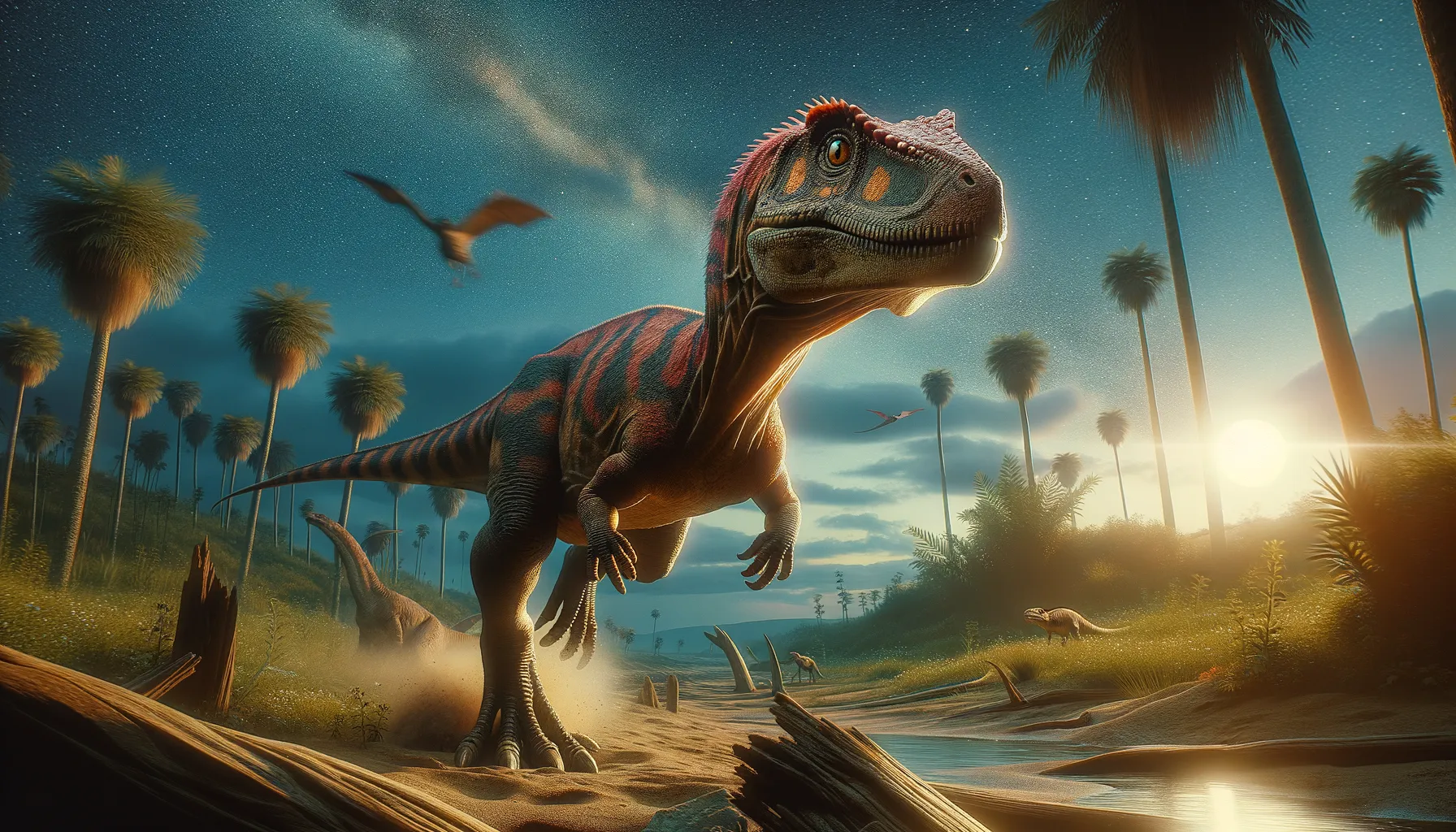
Scaphonyx
A glimpse into reptilian evolution's dawn.
Period
Triassic
Length
About 2 meters in length.
Height
Approximated at about 1 meter tall at the hips.
Weight
Estimated to be moderately heavy.
Scaphonyx, often associated with the genus Rhynchosaurus, is an intriguing prehistoric creature from the Triassic period. Known primarily from fossil findings in South America, this genus showcases some early evolutionary traits seen in later reptiles. Its moderate size and unique physical characteristics provide a glimpse into the diversity of life millions of years ago, offering important insights into the transition of early reptiles.
Diet
Scaphonyx was likely an herbivore, feeding on low-lying vegetation and plants available in its environment. Its diet would have consisted of ferns, leaves, and possibly fruits or seeds depending on seasonal availability.
Hunting
Being an herbivore, Scaphonyx didn’t engage in hunting behavior. Instead, it likely foraged for vegetation using its keen sense of smell to locate food sources. Rather than stalking prey, it had to be vigilant in avoiding predators.
Environmental challenges
Scaphonyx faced several environmental challenges, such as fluctuating climatic conditions during the Triassic period. These shifts likely influenced the availability of its plant-based food sources. Competition with other herbivores for limited resources could have also posed a significant challenge, requiring adaptations in feeding habits. Additionally, the presence of predators required Scaphonyx to develop effective defenses or strategies for evasion.
Speed
Likely slow-moving due to its heavy build.
Lifespan
Average lifespan is not precisely known.
First discovery
First discovered in Brazil during the 19th century.
Fun Facts
- Scaphonyx is believed to have been a herbivore, feeding mainly on plants.
- It lived during the Late Triassic period, making it one of the earlier dinosaurs.
- The name Scaphonyx means 'spade claw,' likely referring to the shape of its claws.
- Fossils of Scaphonyx have been found in South America, specifically in Brazil.
- Unlike many dinosaurs, Scaphonyx might have walked on all fours, given its limb structure.
- Scaphonyx could have been around 2 meters long, making it modest-sized compared to larger dinosaurs.
- The exact classification of Scaphonyx is debated, with some scientists considering its features as similar to reptiles like rhynchosaurs.
Growth and Development
The growth of Scaphonyx was possibly slower compared to later dinosaur species, reflective of its more primitive developmental stage. Juveniles would have needed significant parental investment to reach maturity, given the threatened environment. As it grew, its physical attributes evolved to better evade predators and efficiently forage for food, marking important steps in its development.
Habitat
Scaphonyx inhabited regions that were varied and could include forests and bushlands, rich with foliage. These areas provided ample food sources and natural cover from predators. Its habitat was likely influenced by the geographic and climatic changes of the Triassic period, suggesting adaptability to different environments. Water sources were also critical components of its habitat, supporting not only drinking needs but also facilitating the growth of its plant diet.
Interaction with other species
Scaphonyx coexisted with a range of other Triassic species, including larger predators and smaller herbivores. Its interactions were likely shaped by its need to avoid becoming prey while securing food amidst competitors. While not an aggressive species, it likely had to assert itself against similar-sized herbivores when feeding in the same areas. Fossil evidence indicates it shared ecosystems with early saurischian and theropod ancestors.
Natural lifespan
Its natural lifespan is hypothesized to be similar to medium-sized reptiles today.
Reproduction
Scaphonyx reproduced by laying eggs, like many reptiles of its time. Nesting sites would have been selected with care to protect against predators and environmental threats. It is conjectured that their reproductive cycle was seasonal, aligned with climatic and food availability patterns. Parental involvement after egg-laying was probably minimal, consistent with reptilian behavior patterns.
Social behaviour
Scaphonyx likely exhibited limited social behavior, primarily solitary or in small groups when necessary for foraging. Its interactions would have been more pronounced during mating seasons when choosing mates was crucial. Territorial disputes with others over feeding grounds could arise, though it was not an overly aggressive species. Communication, if any, might have involved visual signals or simple vocalizations.
Fossil locations
Fossils of Scaphonyx have been primarily found in South America, particularly in Brazil. The fossil evidence mostly consists of partial skeletal remains, giving insight into its physical structure and lifestyle. Discoveries are mainly associated with Triassic deposits, providing a window into the early age of reptiles. The fossil record helps map out its existence across ancient supercontinents.
